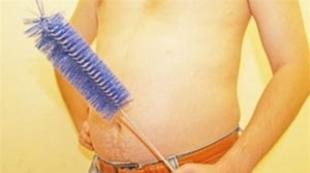Repair and maintenance aps. Project for the production of works for the installation and commissioning of an automatic fire alarm and warning system
Ministry of Instrumentation, Automation and Control Systems
(Minpribor)
DEPARTMENTAL BUILDING REGULATIONS
REGULATIONS
DEVELOPMENT OF PROJECTS OF PRODUCTION OF WORKS
FOR INSTALLATION OF AUTOMATIC FIRE EXTINGUISHING INSTALLATIONS
AND INSTALLATIONS OF SECURITY, FIRE AND SECURITY-FIRE ALARMS
VSN 25-09.66-85
Contributed by the All-Union Industrial Association "Soyuzspetsavtomatika"
Instead of VMSN 58-77
These rules have been developed in addition to SN 47-74 and establish requirements for the composition, content, procedure for the development and approval of work projects (PPR) for the installation of automatic fire extinguishing installations (AUP) and security, fire and fire alarm systems (OS, PS , OPS) performed by organizations of the VPO Soyuzspetsavtomatika.
PPR are developed in order to determine the most effective methods fulfillment installation work, ensuring safety and high labor productivity, helping to reduce their cost and labor intensity, reduce the time of installation work and improve their quality. It is not allowed to carry out installation work without projects for the production of work.
1. GENERAL PROVISIONS
1.1. When developing a PPR, the following requirements should be met:
a) state and industry standards;
b) chapters of building codes and regulations and other normative documents on production and acceptance, as well as the economics of construction and installation works approved by the USSR State Construction Committee;
c) departmental regulatory documents for installation work approved by the Ministry of Instrumentation, VPO Soyuzspetsavtomatika and these rules;
d) orders and orders of the Ministry of Instrumentation, VPO Soyuzspetsavtomatika.
1.2. PPR should be developed taking into account:
a) characteristic features specific object and local installation conditions;
b) application of the most advanced forms of planning, organization and management of installation work;
c) application of technological processes that ensure the required level of quality of work;
d) increasing the level of industrialization of installation work;
e) reducing labor intensity and reducing labor costs due to the transfer of a significant part of the volume from the installation site to the installation and preparation sites (MZU);
f) widespread use of unified and typed assembly units, structures and products;
g) complete deliveries of technical means of AUP, OS, PS, OPS and the container method of supplying products and materials.
1.3. It is necessary to start developing a PPR if:
a) approved design and estimate documentation or inspection report;
b) contracts for the production of installation work.
1.4. When developing a PPR for the installation of AUP, OS, PS, OPS, it is necessary to be guided by:
a) standard operating PPR (if any in the installation organization);
b) technological documentation for the production of installation work.
1.5. PPR for the installation of AUP and OS, PS, OPS installations, as a rule, should be developed by the installation organization. It is allowed to develop a WEP for the installation of AFS and installations of OS, PS, OPS for large and unique objects by the design organization, provided that the customer submits a limit for design and survey work, in this case, the installation organization must transfer the necessary initial data to the WEP developer (according to these rules) and provide coordination and approval of WEP.
1.6. Supervision over the performance of technically complex installation work, in cases stipulated by the terms of reference for the development of the PPR, should be carried out by the organization that developed the PPR.
1.7. The text part of the PPR must be carried out in accordance with the requirements of GOST 2.105-79, and the graphic part - in accordance with the requirement of GOST 2.104-68, the format of the sheets must comply with the requirements of GOST 2.301-68.
1.8. In the case of developing a PPR using a computer, it is necessary to be guided by the technical documentation of the automated control system for assembly and commissioning production (ACS MNP) and these rules.
The type and completeness of the technical documentation of the ACS MNP must comply with the requirements of GOST 24.101-80.
2. INITIAL DATA FOR THE DEVELOPMENT OF WEP
4.2. General information for the facility must be drawn up in the form in accordance with the mandatory installation of OS, PS, OPS installations and in the form - AUP installations.
4.3. The explanatory note to the PPR, as a rule, includes the following information:
a) a brief description of object (number of storeys, type of building, height of premises, type of heating, electricity supply, presence of a basement);
b) description of the technology for the production of certain types of work;
c) a technological route map for rigging work, developed taking into account the requirements of the "Rules for the Design and Safe Operation of Load-Lifting Cranes", as well as information letters from the USSR Gosgortekhnadzor bodies;
d) instructions on the organization of warehouse and tool management (the procedure for providing warehouse space and special conditions for storing tools and means of labor);
e) instructions for testing and commissioning the installation (according to the "Rules for the production and acceptance of work. Automatic fire extinguishing installations" and "Rules for the production and acceptance of work. Installations of security, fire and fire alarm systems");
f) instructions for monitoring and assessing the quality of installation work;
g) calculation of the coefficient of industrialization, determined in accordance with " Guidelines on the calculation of technical and economic indicators of the mechanization of installation work, approved by the VPO Soyuzspetsavtomatika on November 17, 1977.
4.4. It is allowed not to provide information on those documents of the explanatory note, work on which is not provided for by the project or the survey report.
4.5. The list of physical volumes of work and labor costs, as recommended, is compiled on the basis of design estimates, price tags, uniform norms and rates, departmental norms and rates, and local norms.
4.6. The picking list for instruments and equipment supplied by the general contractor (customer) must be drawn up in the form in accordance with the mandatory.
4.7. The picking list for installation materials must be drawn up in accordance with the mandatory form and, upon delivery of materials by the customer or general contractor, be agreed with representatives of the relevant organizations.
4.8. The picking list of mounting products supplied by the Soyuzspetsavtomatika factories must be drawn up in the form recommended.
4.9. Drawings and sketches are attached to the picking list for products, enlarged units and blocks assembled at the MZU, according to the recommended one.
4.10. The list of building structures for the installation of instruments and equipment should be drawn up in the form recommended, indicating the deadlines by which building organizations must hand over these structures for installation. The list must be agreed with the customer and the general contractor.
4.11. The technological route map of rigging operations is a diagram of the route for moving large assemblies, blocks and other equipment weighing more than 60 kg from the MZU or warehouse to the installation site, while the route on the territory of the facility must be plotted on a copy from the general plan, where the following must be indicated:
a) places of installation of truck cranes or other lifting mechanisms;
b) the minimum allowable distances from the extreme overall points of mobile lifting mechanisms to buildings and structures, as well as to stored materials, structures, etc.;
c) the distance from the lifting mechanism to power lines, places of traffic, pedestrians;
d) areas for storage of goods;
e) fencing of hazardous areas;
f) methods of slinging individual most complex units to be lifted or moved, etc.
If necessary, it is allowed to apply other data required for carrying out rigging work on the copy.
The map should indicate the mechanisms and devices necessary to perform rigging and transport work, as well as the sequence of transportation and movement of goods.
4.12. The list of necessary tools, fixtures and mechanisms (not included in the approved set for the brigade) should be drawn up in the form recommended.
4.13. A list of the breakdown of the facility into installation zones and the need for materials and equipment by zones should be drawn up in the form recommended.
4.14. The special labor safety requirements, drawn up in the form in accordance with the mandatory, should reflect specific safety measures for the implementation of installation work at this facility (work at height, with electrified tools, gas welding, in electrical installations, for moving mounting elements in the installation area, loading and unloading, etc.).
4.15. The calendar schedule for the production of installation work according to the mandatory must be drawn up in accordance with the stages of work, broken down into separate types of work or technological operations. The scope of work is taken from the estimates for the project. The composition of the link, the labor intensity per unit of work is taken taking into account the achieved output.
4.16. The map of operational quality control of installation work should be compiled in accordance with the recommended.
5. COORDINATION AND APPROVAL OF WEP
5.1 The installation organization, together with the developer, coordinates the WEP with the general contractor (customer) in the form of a letter (minutes), or signatures on the title page, on tracing papers or copies of the relevant documents.
5.2. The following documents from the composition of the PPR are subject to agreement with the general contractor (customer):
a) the calendar schedule for the production of installation work;
b) picking lists for instruments, equipment, materials;
c) a list of building structures;
d) a list of the breakdown of the facility into installation zones and the need for equipment and materials by zones.
5.3. The prepared WEP is approved by the chief engineer of the installation department (if necessary, it is preliminarily reviewed at the technical Management Council) and the project is stamped “To production”.
5.4. The binding of standard WEPs and WEPs of repeated application to specific conditions must be agreed and approved in the same manner as newly developed WEPs.
5.5. The terms for the development and transfer of WEP are established in the terms of reference for its development.
Appendix 1
|
AGREED ____________ (position) ___________________________ ___________________________ (name of company customer) ___________________________ ___________________________ (the date) |
APPROVE Chief Engineer ___________________________ ___________________________ (name of assembly organizations) ___________________________ (signature, surname, initials) ___________________________ (the date) |
TECHNICAL TASK
(the form)
|
for the development of WEP for installation _______________________ (name of AUP or installation of OS, PS, OPS) 1. __ (Object name) 2. Customer of PPR _________________________________________________________________ (name and ________________________________________________________________________________ organization address) 3. Developer of WEP ______________________________________________________________ (name and ________________________________________________________________________________ organization address) 4. Work production time: Beginning ____________________ 19 _____ End ____________________ 19 _____ 5. Customer of the object _______________________________________________________________ (name and ________________________________________________________________________________ organization address) 6. General contractor ______________________________________________________________ (name and ________________________________________________________________________________ organization address) 7. Data on the breakdown of the facility into installation stages in accordance with the contract ________________________________________________________________________________ ________________________________________________________________________________ ________________________________________________________________________________ 8. Data on installation tools, mechanisms, lifting equipment and transport available to the installation organization
9. Other requirements, including special installation conditions, the need for architectural supervision ________________________________________________________________________________ ________________________________________________________________________________ ________________________________________________________________________________ 10. List of original technical documentation attached to the terms of reference
|
Annex 2
Mandatory
|
Ministry of Instrumentation, Automation and Control Systems VPO "Soyuzspetsavtomatika" Production Association ____________________________________________________ CMNU _______________________________________________________________________________ APPROVE Chief Engineer __________________________ (name of SMNU) __________________________ (signature, first and last name) "____" ____________ 19 ___ PROJECT OF WORK PRODUCTION (the form) (Name ________________________________________________________________________________ settings) ________________________________________________________________________________ (Object name) |
Annex 3
Mandatory
|
________________________________________________________________________________ (name of ministry) ________________________________________________________________________________ (name of organization - developer of WEP) APPROVE Chief Engineer ______________________ (name of SMNU) ON __________________ (Name) ________ (I.O. Surname) (signature) "____" _________ 19___ PROJECT OF WORK PRODUCTION (the form) for the installation of systems ________________________________________________________________ (Name ________________________________________________________________________________ settings) ________________________________________________________________________________ (Object name)
|
Appendix 4
Mandatory
GENERAL INFORMATION ON THE OBJECT (the form)
|
1. Name of the object, code ________________________________________________________ 2. Project organization: _________________________________________________________ 3. Customer: _____________________________________________________________________ 4. General contractor:_________________________________________________________________ 5. Agreement No. ___________ dated "_____" ______ 19____. 6. Total estimated cost ____________________________ rub. 7. The cost of installation work __________________________ rub. 8. Cost adjustment works _________________________ rub. 9. Deadline for entering the object _____________________________________________________________ 10. Duration of work ___________________________________________ 11. The complexity of installation work ______________________ people / hour. 12. The complexity of adjustment work ______________________ people / hour. 13. Average output _________________________________ rub. 14. Number of workers by profession: a) ____________________________ people d) _____________________________ people b) ____________________________ people e) _____________________________ people c) ____________________________ people f) _____________________________ people |
Appendix 5
Mandatory
GENERAL INFORMATION ON THE OBJECT (the form)
|
1. Name of the object, code _________________________________________________ 2. Design organization ____________________________________________________________ 3. Customer ____________________________ account No. ______________________________ 4. General contractor _______________________ account No. ______________________________ 5. Agreement No. _________________ dated "_____" ________________ 19 ___ 6. Total estimated cost ______________________________ rub. 7. The cost of installation work ____________________________ rub. Including cost: a) the technological part ________________________________ rub. b) electrical part ___________________________________ rub. 8. The cost of adjustment work ____________________________ rub. 9. Protected area __________________________________ m 2 10. Number of sections ___________________________________ pcs. 11. Deadline for commissioning the object ______________________________________________________________ 12. Duration of work _____________________________________________ 13. Labor intensity of installation work ________________________ people / hour. including labor intensity: a) technological part _________________________________ person/hour. b) electrical part _________________________________ person/hour. 14. Labor intensity of adjustment works ________________________ man/hour. 15. Average output ____________________________________ rub. 16. Number of workers by profession: a) ____________________ people d) ____________________ people b) ____________________ people e) ____________________ people c) ____________________ people f) ____________________ pers. 17. Data and terms of the construction and technological readiness of the object for the production of installation works (according to the acts of checking the readiness of the object No. ___________ dated "______" __________________________________________): a) the readiness of the premises subject to fire protection _______________________ b) the readiness of the premises for the pumping station ___________________________________________ c) the presence of water inlets ________________________________________________ d) the presence of an on-site workshop, warehouse ____________________________________________ e) availability of household and utility rooms _______________________________________ f) provision of materials and equipment ____________________________________ g) availability of power supply ______________________________________________ h) the presence of embedded parts __________________________________________________________ 18. Decisions on postponing the start of installation work and the commissioning date in accordance with act No. _______ from "_____" ______ 19_____ (in cases of violation of the terms of construction readiness and its completion with equipment and materials) ____________________________________________________________________________ ____________________________________________________________________________ |
Appendix 6
STATEMENT
physical volume of work and labor costs
(the form)
|
Name of works |
units rev. |
Quantity by |
Per unit |
For all work |
||||||||
|
project |
according to the PPR |
|||||||||||
|
project |
PPR |
norm of time, person/hour |
rate |
item of installation work (rub.) |
norm of time, person/hour |
salary (rub.) |
item of installation work (rub.) |
norm of time, person/hour |
salary (rub.) |
|||
|
etc. |
||||||||||||
|
Total: |
||||||||||||
Compiled by: __________________ _________________ _____________________
(position)
"_____" _______________19 _____
Appendix 7
Mandatory
PACKING LIST
for instruments and equipment of the general contractor (customer) (the form)
|
Name |
Type, brand |
unit of measurement |
Quantity |
Delivery time to the object |
Note |
|
etc. |
Appendix 8
Mandatory
PACKING LIST
mounting materials (the form)
The supplier_____________________________________________________________________
(name of company)
|
Name of materials (brand, size, GOST) |
unit of measurement |
Total |
including: |
Note |
|||
|
directly to the installation area |
for processing (at MZU) |
||||||
|
amount |
delivery time |
amount |
delivery time |
||||
|
etc. |
|||||||
Annex 9
PACKING LIST
assembly products supplied by Soyuzspetsavtomatika factories
(the form)
|
Name of mounting products |
Normal or drawing number |
Product marking |
unit of measurement |
Quantity |
Delivery time to the object |
Note |
| 1. | ||||||
| 2. | ||||||
| 3. | ||||||
| etc. |
Compiled by: ___________________________________
(position)
____________________________________________
(signature) (surname, initials)
"_____" ______________ 19 _____
Annex 10
PACKING LIST
for products, enlarged units and blocks assembled at the MZU
(the form)
|
Node or block name |
Normal or drawing number |
Quantity |
character number |
Delivery time to the object |
Note |
|
etc. |
Compiled by: ________________________________________
(position)
_________________________________________________
(signature) (surname, initials)
"_____" _______________ 19 _____
Annex 11
SCROLL
building structures
(the form)
|
Name of structures |
No. of working drawings |
Completion date |
Note |
|
etc. |
Annex 12
SCROLL
necessary tools, fixtures and mechanisms
(the form)
|
Name of tools, devices and mechanisms |
Type, brand |
unit of measurement |
Quantity |
Note |
|
etc. |
Appendix 13
STATEMENT
division of the object into mounting zones
and needs of equipment and materials by zones
(the form)
|
Installation zone name |
Name of equipment and materials by installation areas |
Unit of measurement |
Quantity |
Delivery time |
Note |
|
etc. |
Annex 14
Mandatory
SPECIAL SAFETY REQUIREMENTS
(the form)
|
Technological operation |
Place of work with increased danger |
Additional labor safety measures |
|
etc. |
Appendix 15
Mandatory
CALENDAR SCHEDULE FOR ASSEMBLY WORKS ON THE FACILITY
(the form)
|
Name of works |
Scope of work |
The composition of the link |
Labor intensity, person/hour |
Time to complete the work (in days from the day the work began) |
||||||||||
|
units rev. |
amount |
etc. |
||||||||||||
|
etc. |
||||||||||||||
Annex 16
OPERATIONAL QUALITY CONTROL CHART
(the form)
|
Main processes and operations to be controlled |
|||||
|
Composition of control (what is checked) |
|||||
|
Technical equipment of control (what is checked) |
|||||
|
Type of control (mode and frequency) |
|||||
|
Direct control (who controls) |
|||||
|
Places of registration of control results (as-built documentation) |
Send your good work in the knowledge base is simple. Use the form below
Students, graduate students, young scientists who use the knowledge base in their studies and work will be very grateful to you.
There is no HTML version of the work yet.
You can download the archive of the work by clicking on the link below.
Similar Documents
Determination of the nomenclature and scope of work. The choice of methods for the production of construction and installation works, the main machines and mechanisms. Calculation of the volume of earthworks. Installation of structures, execution of joints and knots. Technical and economic indicators of the construction plan.
thesis, added 01/24/2016
Scheduling, taking into account the complexity of the types of work and the standard duration of the construction of the facility. Architectural and planning characteristics of the building. Formation of technological complexes of work and breakdown of the general front of work into private ones.
term paper, added 06/02/2009
Substantiation of installation methods for a prefabricated building. Determination of labor intensity of work. Load-handling devices and devices for mounting and temporary fastening of the structure. Organization and technology of the construction process. Work schedule.
term paper, added 12/23/2015
Organizational and technological scheme of the construction of the facility. Work production methods. Table of works and resources of the network diagram. Estimated cost. Technical and economic indicators for the project of a panel-block 3-section 11-storey residential building.
term paper, added 06/21/2009
Development of the installation of a one-story industrial building. Determination of the labor intensity of the work carried out, the composition of the assembly links. Selection of transport and inventory. Routing for the installation of columns of the middle row, the work schedule.
term paper, added 01/08/2013
Determining the scope of earthworks at the construction site. Selection and justification of production methods, calculation of the volume of the pit, machine capacity and duration; distribution of earth masses, excavator slaughter scheme. Calendar chart; occupational Safety and Health.
term paper, added 08/27/2012
Characteristics of ventilation equipment and construction and installation works. Calendar planning. Calculation of the labor intensity of the work performed, the need for materials and structures, the number of personnel. Technical and economic indicators of the construction plan.
term paper, added 06/27/2016
Natural and climatic characteristics of the construction area. The choice of structures and the method of their installation. Technology of installation of structures with the selection of devices. Determining the scope of work. Calculation of labor costs. Calendar plan production of works.
term paper, added 06/17/2014
CJSC "AUTOMATIC"
Object: Branch of JSC "OMK-Steel". Foundry and rolling complex.
Shredded scrap production area. Shelter of non-ferrous sorting area
PROJECT OF WORK PRODUCTION
P.106.2015-PPR
Project for the production of works for the installation and commissioning of an automatic fire alarm and warning and evacuation control systems
Vyksa, Nizhny Novgorod Region

LIST OF SHEETS OF THE MAIN SET
Name |
Note |
1 General data
1.1 List of sheets of the main set
1.2 List of referenced and attached documents
1.4 List of main sets of working drawings
1.5 General information
2. Characteristics of the object and construction conditions
3. Choice rational ways work
4. Separation of the scope of work at the facility by type, performer and site
5. Determining the duration of installation and labor intensity of work
6. Calculation of the need for labor and material and technical resources
7. Feasibility studies project indicators
8. Organization of production and installation and commissioning
9. Safety
2 Applications
2.1 Construction and installation work schedule
2.2 List of requirements for materials and equipment
2.3 Schedule for the receipt of equipment and materials
Vzam. inv. No.
P.106.2015-PPR |
|||||||||||
OJSC "Vyksa Metallurgical Plant" |
|||||||||||
Kharlamov |
|||||||||||
Color Sorting Area Shelter |
|||||||||||
checked |
|||||||||||
metals. AUPS and SOUE. |
|||||||||||
general information |
CJSC "AUTOMATIC" |
||||||||||

LIST OF REFERENCES AND APPLIED DOCUMENTS
Designation |
Name |
Note |
|
Reference Documents |
|||
123-FZ (as amended by |
the federal law |
"Technical |
|
fire regulations |
|||
security" |
|||
GOST R ISO 9000-2008 |
Quality management systems. |
||
Fundamentals and vocabulary |
|||
GOST R ISO 9001-2008 |
Quality management systems. |
||
Requirements |
|||
GOST R ISO 9004-2010 |
Management for Success |
||
organizations. Management based approach |
|||
quality |
|||
GOST R ISO 19011-2003 |
Systems Audit Guidelines |
||
(ISO 19011-2003) |
quality management and/or systems |
||
environmental management |
|||
GOST R 40.003-2008 |
Certification system GOST R. Register of systems |
||
quality. Management certification procedure |
|||
quality for compliance with GOST R ISO 9001- |
|||
2008 (ISO 9001:2008) |
|||
GOST 12.1.046-85. SSBT |
Construction. Building lighting standards |
||
sites |
|||
GOST 12.1.051-90. SSBT |
Electrical safety. Safety distances |
||
in the security zone of power lines |
|||
voltage over 1000 V |
|||
GOST 12.3.009-76* |
Loading and unloading works. |
||
General requirements security |
|||
GOST 12.3.010-82. SSBT |
The container is industrial. Requirements |
||
operational safety |
|||
GOST 12.3.020-80 |
The processes of movement of goods in enterprises. |
||
General safety requirements |
|||
GOST 12.3.033-84. SSBT |
construction machines. General requirements |
||
operational safety |
|||
GOST R 12.4.026-2001. |
Signal colors, safety signs and |
||
signal marking. Appointment and rules |
|||
applications. General technical requirements and |
|||
characteristics. Test Methods |
|||
GOST 12.4.059-89. SSBT |
Construction. Safety fences |
||
inventory. General specifications |
|||
GOST 23407-78 |
Inventory building fences |
||
sites and sites for the production of construction and |
|||
GOST 24258-88 |
Scaffolding tools. |
||
General specifications |
|||

GOST 24259-80 |
Mounting accessories for temporary |
|||||||||||||||
fixing and alignment of building structures. |
||||||||||||||||
Classification and general technical requirements |
||||||||||||||||
GOST 26887-86 |
Platforms and stairs for construction |
|||||||||||||||
installation work. General specifications |
||||||||||||||||
GOST 27321-87 |
Rack-mounted scaffolding for construction |
|||||||||||||||
installation work. Specifications |
||||||||||||||||
GOST 28012-89 |
Scaffolding mobile collapsible. |
|||||||||||||||
Specifications |
||||||||||||||||
GOST 12.1.004-91* |
Fire safety. General requirements |
|||||||||||||||
GOST 12.1.030-81. SSBT |
Electrical safety. Protective ground. |
|||||||||||||||
Zeroing |
||||||||||||||||
GOST 12.1.033-81* |
Fire safety. |
|||||||||||||||
Terms and Definitions |
||||||||||||||||
GOST 31251-2003 |
Building structures. Methods |
|||||||||||||||
definitions fire hazard |
||||||||||||||||
ST SEV 383-87 |
Fire safety in construction. |
|||||||||||||||
Terms and Definitions |
||||||||||||||||
SP 1.13130.2009 |
||||||||||||||||
Escape routes and exits |
||||||||||||||||
SP 2.13130.2009 |
Fire protection systems. |
|||||||||||||||
Ensuring the fire resistance of protected objects |
||||||||||||||||
SP 3.13130.2009 |
Fire protection systems. System |
|||||||||||||||
alerts |
and evacuation management |
|||||||||||||||
people in a fire. fire department requirements |
||||||||||||||||
security |
||||||||||||||||
SP 4.13130.2009 |
fire fighting systems |
|||||||||||||||
Limiting the spread of fire on |
||||||||||||||||
protection objects. requirements for volumetric |
||||||||||||||||
planning solutions |
||||||||||||||||
SP 5.13130.2009 |
fire fighting |
|||||||||||||||
Fire installations |
signaling |
|||||||||||||||
automatic fire extinguishers. Norms and |
||||||||||||||||
design rules |
||||||||||||||||
SP 6.13130.2009 |
fire fighting systems |
|||||||||||||||
Electrical equipment. fire department requirements |
||||||||||||||||
security |
||||||||||||||||
SP 7.13130.2009 |
Heating, |
Ventilation and air conditioning. |
||||||||||||||
Fire requirements |
||||||||||||||||
SP 8.13130.2009 |
fire fighting systems |
|||||||||||||||
Sources of outdoor fire fighting |
||||||||||||||||
water supply. fire department requirements |
||||||||||||||||
security |
||||||||||||||||
SP 10.13130.2009 |
Fire protection systems. |
|||||||||||||||
Internal fire water supply. |
||||||||||||||||
Requirements fire safety |
||||||||||||||||
P.106.2015-PPR |
||||||||||||||||

SP 12-135-2003 |
||||||||||||
Industry sample instructions for protection |
||||||||||||
SP 12-136-2002 |
Labor safety in construction. |
|||||||||||
Solutions for labor protection and industrial |
||||||||||||
security in organization projects |
||||||||||||
construction and work production projects |
||||||||||||
SNiP 12-01-2004 |
Organization of construction |
|||||||||||
SNiP 3.03.01-87 |
Bearing and enclosing structures |
|||||||||||
SNiP 12-03-2001 |
Labor safety in construction. |
|||||||||||
Part 1. General requirements |
||||||||||||
SNiP 12-04-2002 |
Labor safety in construction. |
|||||||||||
Part 2. Construction production |
||||||||||||
SNiP II-89-80* |
Master plans for industrial |
|||||||||||
enterprises |
||||||||||||
SNiP 23-05-95* |
natural and artificial lighting |
|||||||||||
PUE. Edition 7 |
Rules for the installation of electrical installations |
|||||||||||
MDS 12-19.2004 |
Construction mechanization. Exploitation |
|||||||||||
tower cranes in cramped conditions |
||||||||||||
lifting cranes. |
||||||||||||
Gosgortekhnadzor of Russia |
||||||||||||
Device rules and safe operation |
||||||||||||
load-lifting cranes-manipulators. |
||||||||||||
Gosgortekhnadzor of Russia |
||||||||||||
Rules for the device and safe operation |
||||||||||||
building hoists. Gosgortekhnadzor |
||||||||||||
Rules for the device and safe operation |
||||||||||||
lifts (towers). |
||||||||||||
Gosgortekhnadzor of Russia |
||||||||||||
POT RM-007-98 |
Intersectoral rules on labor protection at |
|||||||||||
loading and unloading operations and placement |
||||||||||||
POT RM-016-2001, |
Intersectoral rules on labor protection |
|||||||||||
RD 153-34.0-03.150-00 |
(safety rules) during operation |
|||||||||||
electrical installations |
||||||||||||
Rules for the operation of electrical installations |
||||||||||||
consumers |
||||||||||||
STO NOSTROY 2.33.6- |
||||||||||||
Rules for preparing for acceptance and commissioning |
||||||||||||
operation of completed construction |
||||||||||||
STO NOSTROY 2.15.8- |
||||||||||||
residential buildings |
||||||||||||
internal. The device of local systems |
||||||||||||
P.106.2015-PPR |
||||||||||||

Requirements, rules and methods of control |
|
STO NOSTROY 2.15.10- |
Network engineering buildings and structures |
internal. Security and fire systems |
|
alarms, warning systems and |
|
evacuation management, control systems and |
|
access control, security systems |
|
television. Assembly, commissioning |
|
work and commissioning |
|
STO NOSTROY 2.33.14- |
Organization of construction production. |
General provisions |
|
STO NOSTROY 2.33.51- |
Organization of construction production. |
Preparation and production of construction and |
|
installation work |
|
STO NOSTROY 2.15.9- |
"Engineering networks of buildings and structures |
internal. The device of distributed systems |
|
management. Installation, testing and adjustment. |
|
Requirements, rules and control methods" |
|
Attached documents |
|
Appendix 1 |
Test program and methodology |
AUPS and SOUE |
Signature and date |
||||||||||
P.106.2015-PPR |
||||||||||

STATEMENT OF MAIN SETS OF WORKING DRAWINGS
Designation |
Name |
Note |
G-21024-DS3-13-01-R-PS |
PS and SOUE system |
|
Signature and date |
|||||||||||||||||||||||||||||||||||||||||||||||||||||||||||||||||||||||||||||||||||||||||||||||||||||||||||||||||||||||||||||||||||||||||||||||||||||||
P.106.2015-PPR |
|||||||||||||||||||||||||||||||||||||||||||||||||||||||||||||||||||||||||||||||||||||||||||||||||||||||||||||||||||||||||||||||||||||||||||||||||||||||
|
Terms of reference for the design of fire safety systems in the organization of a site for the production of shredded scrap. Shelter of non-ferrous metals sorting zone. Working documentation G-21024-DS3-13-01-R-PS "PS and SOUE system" developed by "Mosgipromez" Requirements of regulatory documents approved in the prescribed manner AT This section deals with the production of works on installation and commissioning of the automatic fire alarm system, warning system and management of people evacuation in case of fire. Solutions for the production of works are aimed at achieving end result– commissioning of an object with necessary quality and within the stipulated time. 2. Characteristics of the object and construction conditions Scrap metal recycling is a labor-intensive process that requires special equipment and preliminary sorting and classification of raw materials. As a result of processing, the quality of scrap is brought into line with existing standards in terms of composition, purity, dimensions, weight, density, crumbling and limiting content of alloying elements. The OMK Casting and Rolling Complex (LPK, Vyksa District, Nizhny Novgorod Region, part of the United Metallurgical Company, CJSC OMK) plans to put into operation a shredded scrap production facility with a capacity of 1 million tons by the end of 2015. The project is one of the stages of the construction of the second stage of the timber complex. The equipment supplier is Metso Lindemann GmbH (Düsseldorf, Germany). The shredder plant is designed for crushing and cleaning scrap, sorting metal and eliminating non-metallic impurities. Each fire compartment is provided independent systems supply and exhaust ventilation in accordance with the requirements of SNiP 2.04.05 - 91* and TU. Possible source of fire (according to GOST 27331-87) - A1 Combustion of solids, accompanied by smoldering. According to the reliability of power supply according to SP 31-110-2003, the entire facility as a whole belongs to category I. The automatic installation of PS and SOUE protects the shelter room of the zone for sorting non-ferrous metals of the site for the production of shredded scrap. Sheets of the need for materials and equipment for AUPS and SOUE, see the appendix (specifications).
Inv. no. Signature and date Mut. inv. No. Automatic installation of a fire alarm and warning people about a fire is a set of fire alarm and warning systems designed to detect a fire, notify facility personnel and personnel about the presence of a fire and its location, to ensure the safe evacuation of people, launch automatic fire extinguishing equipment and ensure fire localization such as smoke extraction, ventilation, etc. Composition of the fire alarm and warning system at the structural level: central equipment, including a device for receiving alarm information (control and receiving devices, a control panel) and visualization tools; system of sensors (detectors) of fire alarm; devices for warning people about a fire, light and sound or speech; equipment for alerting city services through the use of a telephone line and / or a radio transmitter; start-up automation devices automatic system fire extinguishing, control of elevator equipment, ventilation and smoke removal. 3. Quality control At all stages of work, it is necessary to carry out production quality control of construction and installation works, which includes incoming control working documentation, structures, products, materials and equipment, operational control of individual construction processes or production operations and acceptance control of intermediate and final work cycles. The composition of controlled indicators, the scope and methods of control must comply with the requirements of SNiP. Quality control of construction and installation works should be carried out by specialists or special services equipped with technical means that ensure the necessary reliability and completeness of control. During the input control of working documentation, its completeness and sufficiency of the technical information contained in it for the performance of work should be checked. At the entrance control building structures, products, materials and equipment should be checked by external inspection for their compliance with the requirements of standards or other regulatory documents and working documentation, as well as the presence and content of passports, certificates and other accompanying documents. The results of the input control are recorded in the Logbook of the results of the input control in the form: GOST 24297-87, Appendix 1, to print the original form, see the Logbook of the results of the input control. Operational control is carried out in the course of construction processes or production operations in order to ensure the timely detection of defects and the adoption of measures to eliminate and prevent them.
Inv. no. Signature and date Mut. inv. No. The quality of work performance is ensured by the fulfillment of the requirements of the technical conditions for the production of work, compliance with the necessary technical sequence in the performance of interrelated work, and technical control over the progress of work. During operational control, it is necessary to check compliance with the technology for performing construction and installation processes specified in the work production projects; compliance of the work performed with the working drawings, building codes and rules. Particular attention should be paid to the implementation of special measures during construction on subsiding soils, in areas with landslides and karst phenomena, permafrost, as well as during the construction of complex and unique objects. Scheme of operational quality control of work
The results of operational control are also recorded in the General work log. Acceptance control is carried out to check and assess the quality of completed construction objects or their parts, as well as hidden works and individual critical structures. The construction site must: Keep a General work log, special logs for certain types of work, the list of which is established by the general contractor in agreement with subcontractors and the customer, and the Designer supervision log of design organizations. Draw up certificates of inspection of hidden works, certificates of intermediate acceptance of critical structures, testing and testing of equipment, systems, networks and devices. Entries in the journals must be controlled by the customer and the representative of architectural supervision. |
In accordance with articles 61 and 63 of the Rules of the fire regime in the Russian Federation, the heads of organizations are required to check the performance of fire protection systems, maintenance and preventive maintenance.
During scheduled and unscheduled inspections, employees of the state fire supervision of the Ministry of Emergency Situations of Russia check not only the availability of AUPS and SOUE systems, but also the existence of a maintenance contract with an organization that has a license from the Ministry of Emergency Situations and Maintenance and PPR Magazines.
Nowadays, trying to save money on various events related to technical security buildings, customers of this type of work force service companies to greatly reduce prices for these services, up to the formal existence of a contract without taking actual measures to maintain the system in working condition.
As they say: Works and works!
It seems that everything was formally observed, but more than once there were cases in the practice of inquiry into the facts of fires, that at the very moment when the fire alarm or warning system was out of order. fires happened. And further. of course, uncomfortable questions to the leadership followed, not to mention the consequences.
Even from the point of view of the benefit of the enterprise: it is cheaper to carry out monthly maintenance than in the event of a system breakdown, one-time payment of a large amount for its repair and restoration.
Like any job, maintenance requires labor. And with unreasonable price reduction Maintenance, it is clear that any company does not have the opportunity to carry out the full performance of work and everything is done somehow.
Each Manager of a serviced object wants to understand for himself not so much the subtleties and nuances of maintenance, but what he pays money for.
Let us consider below what activities are included in the monthly maintenance of the APS and SOUE and how this is done:
Control panel, Backup power supply:
External inspection for the presence of light indication
Open the backup power supply, measure the voltage of the battery, which should be (12V)
Check incoming terminal blocks
In case of non-compliance normal voltage replacement required
Selectively disturb one of the ALs controlled by the control panel and make sure that the control panel operates in the “Alarm” mode. Inspection should show "Break". The indicator lights and the siren are flashing, the sounder is on
Restore loop violations and set the control panel to standby mode
Short-circuit the remote element of the controlled loop and make sure that the control panel operates in the “Alarm” mode Open the remote
If the control panel has a backup power supply, disconnect the control panel from the mains leaving the voice power enable toggle switch on
Switch off the control panel, disconnect the ohmmeter from the "Control" contacts and connect the monitoring station line to them
Restore the control panel power circuit from the mains alternating current and cover the terminal blocks.
Low-current loops of fire systems:
Checking the strength of fastening of mechanical protection points, entry points, passage points through the wall
Inspection of insulation of wires and connections
Wiping from various contaminants
Taking the necessary measures, up to shutdown in case of emergency
Elimination of sag in cable networks and damage to insulation
Partial replacement of brackets and fasteners
Replacement of areas with damage
Changing parameters when disconnecting and connecting cable networks
Fire smoke detectors:
Dust and dirt cleaning and external inspection
Fastener tightening
Checking the quality of fixing fittings
Health check
Inspection and elimination of visible damage
Identification and repair of broken parts
Sound and voice annunciators:
Check the condition of the loudspeaker
Surface cleaning without dismantling the speech loudspeaker
Restore the trunk to the radio node. Check loudspeaker power consumption setting
Send a voice signal B-pillar radio communication node and make sure that the signal is audible at all points of the serviced premises.
Make an entry in the maintenance work log, based on the results of the work.
These are the main activities that are performed monthly.
For each object, a plan is developed for the schedule of maintenance and preventive maintenance in accordance with the instructions of manufacturers and guidance documents.
You can order the service in St. Petersburg by contacting the Security Complex company.
I didn’t have five in the morning) I’m from the Far East .. thanks for the answer. We have a slightly different situation with municipalities. maintenance, of course, was carried out as you described, but for the second year almost 80% of the objects of education have been changed for maintenance and batteries, and how much money can we get from someone to replace the warning signs there (they stop shining, they are on), speakers, again detectors (to the question of what kind of animal Turquoise is - http://rovalant.com/production/biriu..., I'm glad that you didn't have to work with this device, the latest versions, by the way, have become more normal, errors have been fixed .. but on objects 98% of first-generation devices .. until recently, it was even impossible to read the configuration from them, and if you need to remove or deliver one detector, you had to program the entire object) and so, in fact, what we get, from all schools. gardens via the radio channel, alarm signals go immediately to the 01 console .. and a car immediately leaves .. if the school or kindergarten managed to call back right away - so they say and so - a false alarm, then it’s normal but they didn’t have time - the question arises who pays for the false call ?? and of course the most important question is who is to blame? there is only one answer from the firefighters - the service organization is to blame, since if you do the MOT correctly, then there will be no false alarms at all! for each such case, I write explanatory notes .. for example, today I was at school, the detector was installed in the exit vestibule .. the mountaineering section is engaged in the premises .. in the evening they have classes outside the door wide open .. the sensor is already covered with frost .. it worked at night! and explanations that the sensors work for humidity, dust in the same way as they do not work for smoke! what is the name of the detector? SMOKE means it only works on smoke. if it were DUST SMOKE WET then everything is clear! there are still moments such that spare parts should be at the facility 10%! never mind! the service organization is obliged at its own expense to change everything that breaks down and fails! in winter it reached the point of absurdity, the group in the kindergarten was flooded, under it in the group of the first floor 4-re PI was flooded, we change it at our own expense! the kindergarten refuses to pay, citing the fact that every month it pays us 1200 rubles, and everything is included in the cost of MOT! at the same time, one such addressable detector costs 1463 rubles! .. I tried from one school of a Trudovik (an intelligent man) to teach how to independently remove the alarm condition from the detector when a ladybug settled in it, a rural school had a disaster with these cows over the summer .. so the representative of the administration kicked me out of the office !! The operating organization is not supposed to know this! ! In general .. for myself, I made a simple conclusion, the administration, as always, wants everything to be but for free !! By the way. I remembered .. about the guarantees for PI, it is very interesting written in the passport! 1. Warranty period of operation is 24 months from the date of commissioning, but not more than 36 months from the date of issue, MTBF is not more than 10 years. and that's from the last 10 years!! we are clearly told - it is written 10 years, which means that it should work for 10 years and there can be no talk of any replacement! at the same time, the same passport says - RovalentSpetsProm LLC guarantees compliance technical CHARACTERISTICS DETECTOR, repair and replacement induring the warranty period of operation, provided that the consumer observes the conditions of operation, storage and
transportation. Briefly expressed) it became easier!











